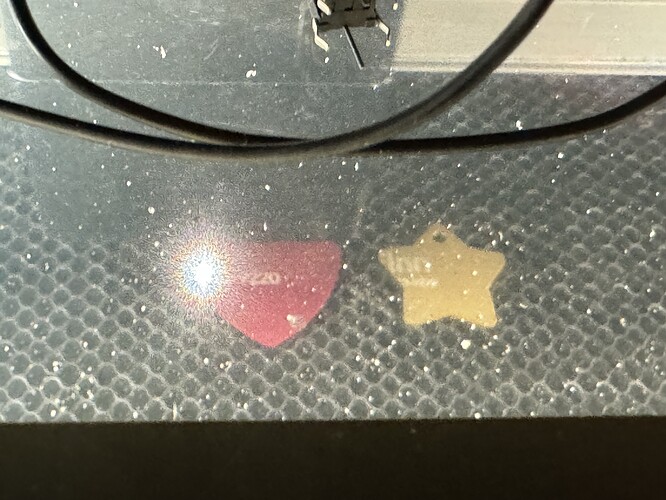So doing a couple of tags for the pup and did the usual workflow I’ve done a gajillion times and wow what a miss. And of course had the focus height set correctly to 0.04” and used my saved settings for the aluminum. I had just finished another job maybe 2 mins before which worked perfectly. I ran this again figuring maybe a fluke. Nope off by the exact same amount. Gonna try a reboot after this and see if it was some weird software state…
Keep us posted. If it is off the exact amount, it seems mechanical - like the printhead got nudged.
I wonder if the VERY strong magnets confused it from the prior run (cutting thick EVA foam)
Rebooting fixed it, so must have been bumped. You’d think that since it homes to the left x axis at the end of every cycle that it would know what at least the X=0 origin is (even if not with the precision of a CNC probe, this was off by over 1/2")
You would think…but it keeps track of the printhead in the software, so if it gets nudged, it doesn’t know that that happened. It remembers where it was before the nudge and uses that as its starting point. Glad it is fixed and that you were engraving small tags rather than fabulously expensive wood items.
It’d need limit switches to actually know it’s at a real origin point. Without those, origin is just reversing the number of steps it took to get wherever it currently is. If it thinks it’s at (30,30) and it moves (-30,-30) but you or something else nudged it to (34, 34) it’ll end up at (4,4) not (0,0) and the next job starts from the wrong place.
I discovered that electronics can get weird in a strong moving magnetic field, which when I thought about the relationship between electricity and magnetism did not seem so weird. But if the machine has rediscovered its zero point the effect should not last.
On my latest prusa printers (the mk4 and xl) the stepper motor controllers sense touch by reporting thier current draw, with sufficient precision to home the axes (z-height is done with a load cell for micron level precision) which is good enough for printing (in x,y if you’re off by a 0.5mm it won’t make a difference unless your model completely fills the build plate to max where that 0.5 offset falls off the bed or hits the end stop, so in this case simple sensing on park would have been likely enough to not have missed by the 0.5” or so (since we basically are visually guesstimating alignment that amount of imprecision would be within the error in the whole process anyway).
The brilliant thing about prusa’s method there was not any additional hardware needed, just asking the stepper controller how things were going, and modeling what a collision looked like. We know the GF has collision detection since Dan’s coffee cup video showed it, so if you have deliberate collisions with the end stops you know where you are sufficiently well. The prusa’s homing looks weird for those used to limit switches and watching the print head repeatedly slam into the x0 sand stop makes it look like some horrible failure mode and strangely unlike most probing on CNC (or even the z-probe on the printer itself) it does not do a 2-step (fast then slow) probe it just rapids into the side like 5-10 times with a loud thunk?
That technique is seemingly less cringy on the xl which is a core-xy (like the Glowforge) vs the mk4 (a so called bed-slinger) where the y-axis is where the print bed moves back in forth in Y where the y-axis homing via slamming the end stops is a lot of mass compared to the print head (on my XL it actually isn’t the print head which it leaves in one of the docks, it’s just the empty tool holder which weighs almost nothing.
